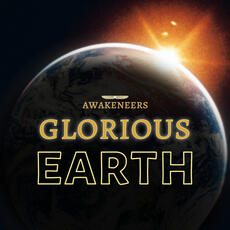Image of Space Debris

SPACE DEBRIS
Before 1961, the entire Earth satellite population was just over 50 objects. Since 1957, about 9,600 satellites have been launched and about 5500 are still in space—and 2300 of these are still functioning. The total mass of all space objects in Earth's is more than 8800 tonnes.
Earth's orbit is now cluttered and dangerous with: ~34,000 objects bigger than 10 cm; ~ 900,000 objects from 1cm to 10 cm; and 128,000,000 objects from greater than 1 mm — 1 cm. However, the vast majority of space junk is too small to be tracked, and millions of tiny flecks zoom around Earth unseen by tracking instruments. "At 250 miles (400 km) up—the altitude of the International Space Station, which has had to maneuver away from three potential space-junk collisions in 2020 alone—objects barrel along at a blistering 17,500 mph (28,160 kph)."
What is it? Jettisoned mission junk, rocket fuel, space station garbage, abandoned rocket parts, used nuclear reactors, leaked radioactive coolant and exploded bits. To date, an estimated 500 break-ups, explosions, collisions, or anomalous events have occurred, making more debris.
As costs decrease the number of satellite launches increases—by 2025 as many as 1,100 satellites could be launched each year; up from 365 in 2018, and from 75 per year in 2005—and the chance of collisions increases.
In 2007, space debris mitigation guidelines were drawn up by the Inter-Agency Space Debris Coordination Committee and the UN Committee on the Peaceful Uses of Outer Space. In September 2019, the newly established Space Station Coalition, a group of space-industry stakeholders, has recommended updated, voluntary guidelines of best practices. The US is responsible for the most debris in space, followed closely by Russia and China.
The commercial exploitation, militarization and weaponization of space around the earth is ongoing. Tourism is just getting started.
2005 version of this image

Sources
*Approximately 95% of the objects in this computer generated illustration are orbital debris, i.e., not functional satellites. The dots represent the current location of each item and are scaled to optimize their visibility and are not scaled to Earth.
Text: European Space Agency, www.esa.int/Safety_Security/Space_Debris/Space_debris_by_the_numbers; Space.com, www.space.com/space-junk; "MIT Technology Review", www.technologyreview.com/2019/06/26/755/satellite-constellations-orbiting-earth-quintuple/; "Best Practices for the Sustainability of Space Operations." https://spacesafety.org/
Tags: space debris, space junk, space debris, global-ecology
Sign up for EARTH Dispatches
Enter you email below to get jaw dropping charts and maps delivered straight to your inbox.
Get the EARTH presentation
A 150 page high-resolution PDF containing all updated maps, charts and data on EARTH website; use as an information-packed educational slide show, printed booklet or a set of single-page handouts.
Learn More







